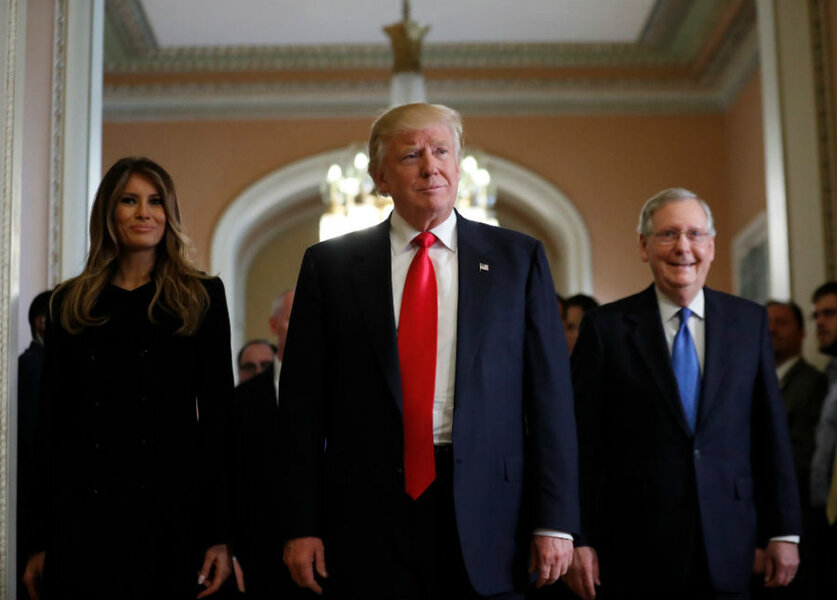Trump’s campaign rhetoric may have been populist, but his tax plan isn’t
Loading...
Donald Trump ran for president as a classic anti-establishment candidate, promising to stand up for regular Joes against the political and economic elites. He often sounded more like Bernie Sanders than, say, House Speaker Paul Ryan. Yet one of Trump’s top priorities is to win congressional approval of a tax cut that the Tax Policy Center estimates would lavish nearly half its benefits on the highest income 1 percent—those making $700,000 or more.
Look at it another way: On average, Trump would cut taxes for middle-income households making $48,000 to $83,000 by about $1,000 or 1.8 percent of their after-tax income. But he’d give those making more than $3.7 million (the top 0.1 percent) an average tax cut of more than $1 million, or 14 percent of their after-tax income.
Many hedge fund operators, bankers, corporate executives, and the other fat cats Trump so disparaged on the stump would pay lower individual income tax rates than they do today. They’d pay lower taxes on their investment income. Some would even pay at a special 15 percent tax rate Trump would create for businesses —less than half his proposed 33 percent top rate for well-paid wage earners. Because high income people are the primary shareholders in firms, they’d benefit from Trump’s proposed cuts in business taxes. And when they die, their estates would owe no taxes no matter how large they are since Trump would repeal the estate tax.
Trump also has a deal for another of his favorite campaign targets--those US-based multinationals that moved jobs overseas. Combined, US corporations have more than $2 trillion in foreign profits sitting overseas for which they have never paid US tax, though the tax rate on that income is 35 percent. Trump would tax that unrepatriated overseas income but at a maximum rate of just 10 percent for cash and 4 percent for other assets—payable over 10 years.
About that $1,000 average tax cut that Trump would give middle-income households: It comes at a price. While Trump has provided little hint of how he’d finance his enormous tax cuts, Congress has only two choices: It can cut spending or it can borrow the money. Both are bad for middle-income households.
If it slashes spending by $7 trillion or anything close to it, Congress inevitably would have to cut many programs that benefit middle-income people. To understand why, here are just a few numbers.
TPC estimates that in 2026 alone, Trump’s tax cuts would add $973 billion to the budget deficit, including extra interest costs and accounting for their effects on the economy (which would be negative). Where would Congress get the money?
Trump has already said he’d exempt Medicare, Social Security, and national defense from budget cuts. The Congressional Budget Office projects that spending for the rest of government in 2026 will be about $1.4 trillion--$624 for Medicaid and $715 billion for everything else (excluding interest on the debt which, despite Trump’s occasional boasts to the contrary, must be paid). Thus, he’d have to slash these programs by 70 percent just to keep the debt from getting worse than already projected.
What are they? In 2026, more than half of Medicaid dollars will be spent on the frail elderly and younger people with disabilities. Other programs include homeland security, transportation, veterans benefits, education, medical and scientific research, agricultural subsidies, and economic development. Who’d be hurt if they are cut? Mostly regular people.
If the tax cuts are not paid for, the government will have to borrow the additional $7 trillion. As a result, interest rates are likely to rise. Who would that hurt? American consumers, who’d face higher rates on their credit cards and home and auto loans. And American workers, since higher borrowing costs would make it more expensive for firms to build those new US factories Trump has been promising.
Who would win if US interest rates go up? The very banks Trump spent the past year attacking.
Donald Trump may have ridden a populist wave to the White House, but at least when it comes to tax policy, it seems to have landed at Boca Raton, not Coney Island.
This story originally appeared on TaxVox.







